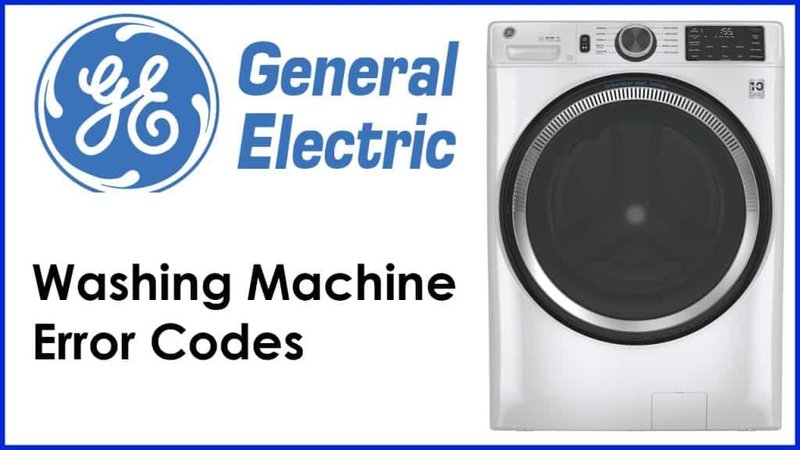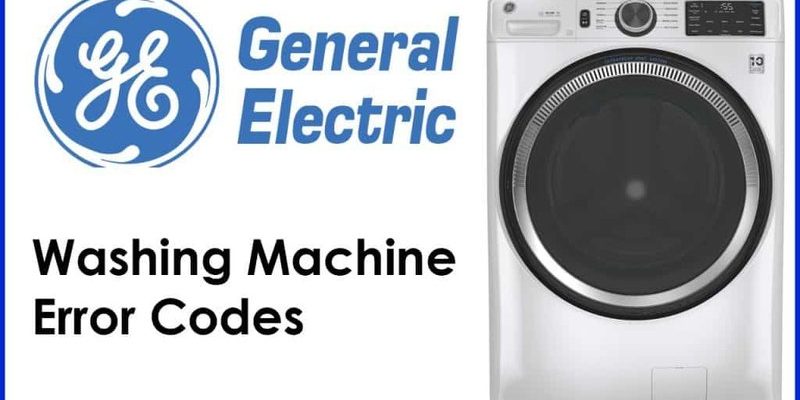
The OE error code on a GE washing machine typically relates to drainage issues. When your washer isn’t draining properly, it’s a lot like a clogged sink that’s waterlogged and needs a good fix to work correctly again. Just as you wouldn’t leave a clogged sink unattended, a washing machine flashing an OE error wants some attention to keep things operating safely and efficiently. In this article, we’ll dive into what this error means, why it occurs, and what you can do about it.
Understanding the OE Error Code
Seeing the OE code can be a bit alarming if you’re not familiar with appliance repair jargon. Essentially, the OE code indicates a drain problem. Imagine trying to empty a bathtub with a tiny hole in the drain plug — it might take forever, or not happen at all! This is similar to what’s happening inside your washer. The machine senses it’s not draining as expected and sends you the OE code as a heads-up.
There are several common reasons for this drainage problem. It could be as simple as a kink or blockage in the drain hose, stopping the water from leaving the machine. Think of it like a garden hose that’s been stepped on; the water just can’t get through effectively. Alternatively, it might be a problem with the pump or the filter being clogged with lint, preventing the machine from working its magic.
To ensure your washing machine keeps running smoothly, it’s important to address these issues as soon as they arise. The good news is that many of these problems are fixable with some basic troubleshooting, which we’ll cover next.
Common Causes of the OE Error
Several factors could be causing the OE error, and identifying the right one requires a bit of detective work. Often, the culprit is a clogged or bent drain hose. Over time, soap residue, debris, and even rogue socks can lead to a blockage. Picture trying to suck a thick milkshake through a straw — the thicker it gets, the tougher it is to draw up. The same goes for your washing machine’s drainage.
Another potential issue is a faulty drain pump. The drain pump is like your washing machine’s heart, pumping water out during the drain cycle. If it’s defective, the machine can’t drain properly, leading to the error code. This might require a professional fix if you’re not comfortable tinkering under the hood.
Lastly, check the filter. Washing machines have filters to catch lint and other small debris. If this filter is clogged, it can prevent water from draining effectively — much like how a stuffed-up air filter can choke a vacuum cleaner’s suction power.
Is It Safe to Continue Using Your Washer?
Here’s the deal: using a washing machine with the OE error code isn’t recommended. Continuing to use the washer without addressing the problem could cause further damage, similar to driving a car with a flat tire. You might get by for a bit, but you’re setting yourself up for bigger issues down the road.
Ignoring the OE code could lead to water leakage, which isn’t just a mess but a potential hazard. The excess water can damage floors or even create electrical risks — not something you want in your home. Plus, the longer the problem persists, the greater the chance of causing more significant damage to your washer, which means more costly repairs or even replacement in extreme cases.
Before things spiral out of control, it’s best to diagnose and fix the problem, ensuring the machine can run as smoothly as possible. If you’re unsure, calling in a professional can give you peace of mind and protect your investment in the appliance.
Steps to Fix the OE Error
First, check the drain hose for any kinks or blockages. Unplug your machine, and inspect the hose for any twists or obstructions. This simple step could be all you need to solve the problem. If it’s clear, examine the drain pump. Again, ensure the machine is unplugged before taking a look — safety first! If the pump seems jammed or isn’t working, that might be your issue.
Next, clean the washer’s filter. Think of this like brushing your hair; it prevents tangles and keeps things flowing smoothly. Most GE washers have a filter access that makes it relatively easy to clean. Just be sure to follow your model’s manual for the exact steps.
If neither of these steps resolves the issue, it might be time to call in a professional repair service. They can diagnose more complex problems, like electrical issues in the control board, and ensure your machine is back to its original condition.
Preventing Future OE Errors
Preventive maintenance goes a long way in keeping your washing machine error-free. Start by being mindful of what you put into the machine. Avoid overloading it, as cramming it full can lead to drainage issues.
Regularly inspect your washing machine’s hoses and connections. Just like you wouldn’t let your car go too long without a tune-up, keep an eye on your washer’s health. Look for signs of wear or blockage, and replace hoses if they look worn out.
Lastly, make cleaning the filter a routine task. Think of it like flossing your teeth — often overlooked but crucial to long-term health. By keeping these small maintenance tips in mind, you can help prevent future occurrences of the OE error and extend the life of your appliance.
By understanding what the OE error code means and taking proactive steps, you can ensure your washing machine runs smoothly and safely for years to come. While it may seem daunting initially, remember that maintaining your appliances can save you time and money in the long run.
